Hornbill Festival in Nagaland
Description
The state of Nagaland is home to several tribes, which have their own distinct festivals. More than 60% of the population of Nagaland depends on agriculture and therefore most of their festivals revolve around agriculture. The Nagas consider their festivals sacred, so participation in these festivals is essential.
To encourage inter-tribal interaction and to promote cultural heritage of Nagaland, the Government of Nagaland organizes the Hornbill Festival every year in the first week of December. The first festival was held in 2000.
The festival is named after the Indian Hornbill, the large and colourful forest bird which is displayed in the folklore of most of the state’s tribes.
| DEPARTURE/RETURN LOCATION | Guwahati Airport/Jorhat Airport | ||||
| DEPARTURE TIME | Please arrive at least 2 hours before the flight. | ||||
| INCLUDED |
|
||||
| NOT INCLUDED |
|
Itineraries:
ROUTE: GUWAHATI – KAZIRANGA – KOHIMA – MOKOKCHUNG – JORHAT
Itinerary
1
DAY 01: Arrive Guwahati
-
- Guwahati, the capital city of Assam situated on the south bank of river Brahmaputra. It is the gateway to the north-eastern region of India. Guwahati is famous for several temples including Kamakhya, all of them are dates back to the Vedic and Puranic times.Visit Navagarh temple on a hill originally built to study Hindu astronomy’s 9 major celestial bodies.
- Overnight at Hotel Gateway Grandeur or similar.
2
DAY 02: Guwahati to Kaziranga National Park (240kms/5hrs).
-
- Kaziranga National Park – is a World Heritage Site, where more than 75% of the world’s total population of the great Indian One horned Rhinoceros can be found. It lies on the southern bank of the Brahmaputra River and is one of the oldest parks of Assam. Besides rhinos, the Asiatic Water Buffalo numbering over 1200, elephants over 1000, tigers more than 81, Swamp deer, Barking deer and Hog deer can be seen. About 400 species of birds are found in the Park.
- Overnight at IORA or similar.
3
DAY 03: Safari at Kaziranga National Park (1 hrs drive/ 3-4 hrs trek)
-
- Early morning go for an elephant safari followed by a jeep safari after breakfast. Post lunch go for another jeep safari. Overnight.
4
DAY 04: Kaziranga to Dimapur (120kms/5hrs):
- DIMAPUR, the “city of the river people”, 80kms northwest of Kohima, is Nagaland’s largest and most industrialized town. It bears little resemblance or affinity to the rest of Nagaland and functions for visitors primarily as a gateway to the state. Standing on the riverside edge of town, Dimapur’s mushroom-like monuments – fertility symbols dating back to the Kachari Kingdom – are the main points of interest. It used to be the capital of the Kachari rulers and one can still see the remains of the ancient Kingdom in the heart of the old town. The ruins date back to the Ahom invasions of the 13th Century.
- Overnight at Hotel Tizu or similar.
5
DAY 05: Dimapur to Kisema village (120kms/4hrs) where the Hornbill festival is held.
-
- To be a part of the festival on the inauguration day
- THE HORNBILL FESTIVAL of Nagaland, which is a yearly feature in the first week of December, is a cultural extravaganza worth a watch. One can see a mélange of Naga cultures on display in one place. A tourist with a keen interest in people, their customs, food habits, sports, dances and songs, will be more than satisfied. This festival is held at Naga Heritage Village, Kisema which is about 12Kms from Kohima and is permanently created for celebration of this festival. Here, typical Naga boys’ dormitories (morungs) of each tribe are constructed in their respective tribal architectural designs to simulate a real village scene. Naga boys dormitories (morungs) are places where impressionable boys learn to socialize and live in a community, where values of survival are taught against the backdrop of head hunting and constant fear of the enemy and animals. It is also a school where they learn the lessons of life such as bravery, loyalty, honesty and arts and crafts. Here they also learn the oral traditions of their people, their stories, myths and legends and pass it down through the generations. Hornbill Festival is the mother of all Naga Festivals, first celebrated in 2000. All Festivals of the 16 odd Naga tribes, normally celebrated over different seasons in a year, are condensed into seven-day festival, 1st to 7th December, every year. It is not, However, a reproduction of the ‘real thing’ but a window to the culture of the Nagas. The Festival highlights every aspect of Naga culture and tradition. Hornbill Festival offers a kaleidoscopic view of Naga culture expressed in the form of Folk dances, Arts, Architecture, Food, Traditional attires, fashion and of course, Music. Enjoy the, often superlatively expressed, hospitality and friendliness of the Nagas.
6
DAY 06: KOHIMA
- Kohima, now the state capital of Nagaland, is situated at an altitude of 1495 mtrs. above sea level. This hill station, with a panoramic view of the rugged Naga Hills was witness to a fifty-day and night non-stop fighting during the 2nd World War. A garrison of 3500 made a stand against a besieging army of 15,000! Visit and discover this “Battle of Tennis Court!” Have a close experience of Angami tribal village.At Kohima – go for a walk around the Garrison Hill area to revisit the Battle of Kohima – hear about the stories of the war as it happened then. The tour culminates at the 2nd World War Cemetery where the famous battle of tennis court took place.
The beautiful Angami village of KHONOMA, 20kms northwest from Kohima, holds a special place in Naga history as the place where Angami warriors made their final stand against the British in 1879. Magnificent rice terracing surrounds the village, irrigated by a complex system of bamboo water pipes, and twenty different types of rice are grown here, each specifically suited to the elevation, soil and aspect of the terraces. A flight of steps, approached through a traditional carved gate, leads up to the highest point of the village from where excellent views take in the hills and the neighbouring villages.
The cathedral in Aradurah Spur is an important landmark of Kohima. The crucifix inside the cathedral carved out from the wood is the largest in India. The inscriptions were presented by the Japanese War veterans of World War II. Here, they say that, prayers are being offered everyday for those killed during the war at the battle of Kohima.
7
DAY 07: AT HORNBILL FESTIVAL
- Full day at the Hornbill festival. Overnight at the hotel.
- Option to go shopping and select some souvenirs that one can take back home as lasting reminder of their visit to this region.
8
DAY 08: KOHIMA – KHONOMA – KOHIMA
- Khonoma village is located about 20 km from the state capital, Kohima. The village, referred to as Khwunoria (named after the Angami term for a local plant, Glouthera fragrantisima), is estimated to be around 700 years old and is spread over an area of 123sq.km. The total population of the village is about 3000, settled in 600 households. Khonoma is famous for its forests and a unique form of agriculture, including some of the oldest terraced cultivation in the region. The terrain of the village is hilly, ranging from gentle slopes to steep and rugged hillsides. The hills are covered with lush forestland, rich in various species of flora and fauna. The state bird, Blyth’s tragopan, a pheasant now nationally endangered, is reportedly found here.
9
DAY 09: KOHIMA – MOKUKCHUNG
- Early morning drive to Mokokchung (140kms/6hrs) via Wokha. Overnight at Whispering Winds or similar.
- Mokokchung, the district headquarter situated at an altitude of 1325 meters above sea level. This picturesque town is the cultural centre of the AO Nagas. The AO warriors used to wear the beautiful black and red handwoven shawl with its white decorated band to signify their prowess over their enemies.
Wokha region is home to the Lotha tribe. It is located at an altitude of 1314mts. above sea level. Lotha Nagas are well known for their folk songs, colourful dresses and dances.
10
DAY 10: MOKUKCHUNG – JORHAT (120kms/4hrs)
- After breakfast drive to Jorhat (120kms/4hrs). Overnight at Heritage Thengal Manor or similar.
- Jorhat is another tea hub in the Upper Assam region. It is the headquarters of the Jorhat district and is the gateway to Majuli Island. Many small and big tea estates surround this town which was planted in the British days. The Gymkhana Club still exists actively which was once the centre of the social evenings and sports in the British days. Jorhat also boasts of the Tea Experimental Station at Tocklai where tea scientists continuously endeavour to introduce new and better plantation practices including developing new clones and saplings.
DAY 11: MAJULI DAY EXCURSION
- After breakfast drives to Neematighat (12kms/20mints) and take a boat cruise to Majuli (3hrs upstream boat cruise- the time depends upon the water level of the river) – the largest inhabited river island in the world and famous for the Vaishnavite Satras or monasteries and its culture. Visit the monasteries and interface with tribes in the island. Afternoon cruise back to the mainland. Enroute there is a possibility of sighting flocks of migratory water birds and the Gangetic River Dolphin.
- Majuli Island-a World Heritage Site, is located in the Brahmaputra River. The island has long served as a monastic retreat for the Vaishnavite community and is noted for its beautiful rural setting and the traditional Assamese and Mishing tribal architecture. On arrival, you will be transfer by road to a monastery, enroute pass through both Assamese and Mishing Villages – the Mishing houses are typified by being built on stilts and their ‘long house’ style of design. At the monastery you will be given an orientation tour of the monastic cells and temple. These Satras were set up Srimanta Shankerdev, the leader of Vaishnavite revivalism in the 16th Century. These are active and nurture the traditional dance form ‘Satriya’ besides religious teachings.
DAY 12: JORHAT – FLY OUT
- After breakfast drive to the airport at Jorhat to board flight for onward destination.

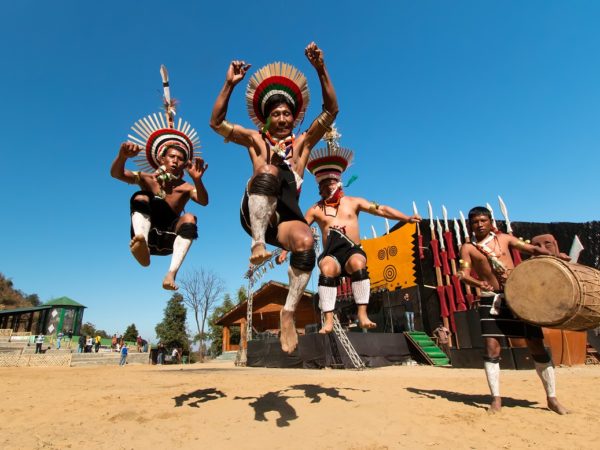
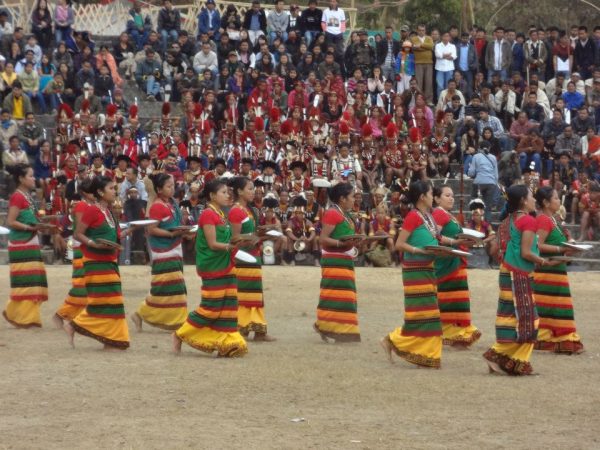
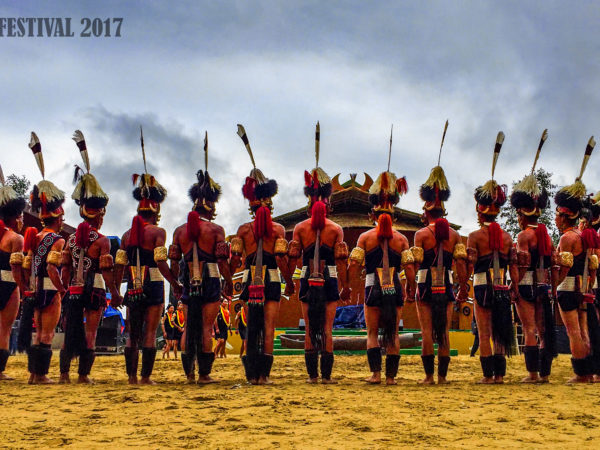

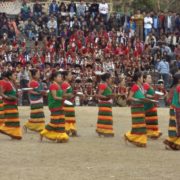
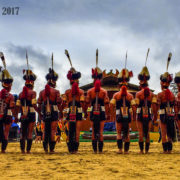
Reviews
There are no reviews yet.